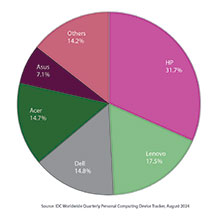10 million Web-borne cyberattacks were unleashed on users in India in Q1 2025: Kaspersky
Digital Edge Bureau 04 Jun, 2025 0 comment(s)
Kaspersky, one of the top-most cyber security products & services companies, has detected nearly 10 million web-borne threats targeting users in India in Q1 2025 (January-March 2025). During this period, over 16.9 percent of Indian internet users encountered online threats – placing India at 85th globally among the top 100 countries affected by web-based attacks.
According to the Kaspersky Security Bulletin, data from the Kaspersky Security Network (KSN) shows that Indian users faced 9,951,980 internet-borne threats in Q1 2025.
Purshottam Bhatia, Head of Consumer Business, Kaspersky India, says, “The Indian threat landscape is evolving rapidly as cybercriminals exploit AI-powered social engineering and digital platforms to deceive users. Attackers use fake brands, spoofed websites, and fraudulent services to steal data or commit financial fraud – especially during high-profile events like IPL or major festivals.”
“We’re advocating a new approach we call ‘Cyber Fitness’, and our ongoing partnership with Mumbai Indians gives us an ideal platform to educate users and drive adoption of strong cybersecurity practices,” adds Bhatia.

Purshottam Bhatia
Head of Consumer Business
Kaspersky India
The KSN processes cybersecurity-related data from millions of voluntary participants using Kaspersky products, combining expert analysis, big data, and machine learning to deliver regional threat intelligence. The threat landscape report for India highlights continued exposure to sophisticated attacks, such as fileless malware, phishing, network spoofing, fake websites, and botnet activity.
Despite the growing complexity of threats, India has shown modest improvement. The KSN data indicates a six percent decline in web-borne incidents compared to the same period in 2024. The total number of threats dropped from 12.45 million in Q1 2024 to under 10 million in Q1 2025, signaling a positive trend.






























































